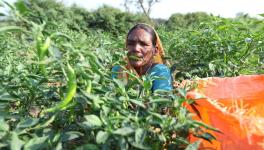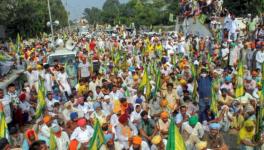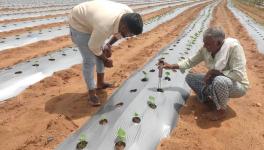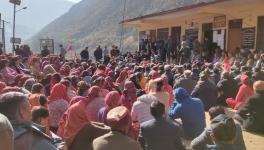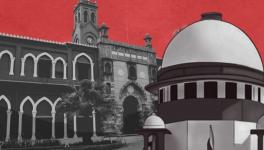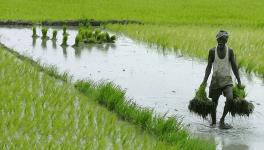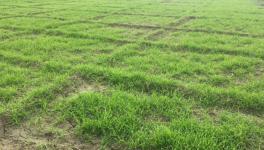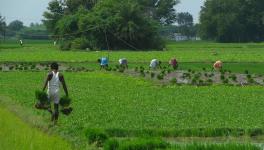What Farmer Protests Owe to Sir Syed’s Economic Ideas
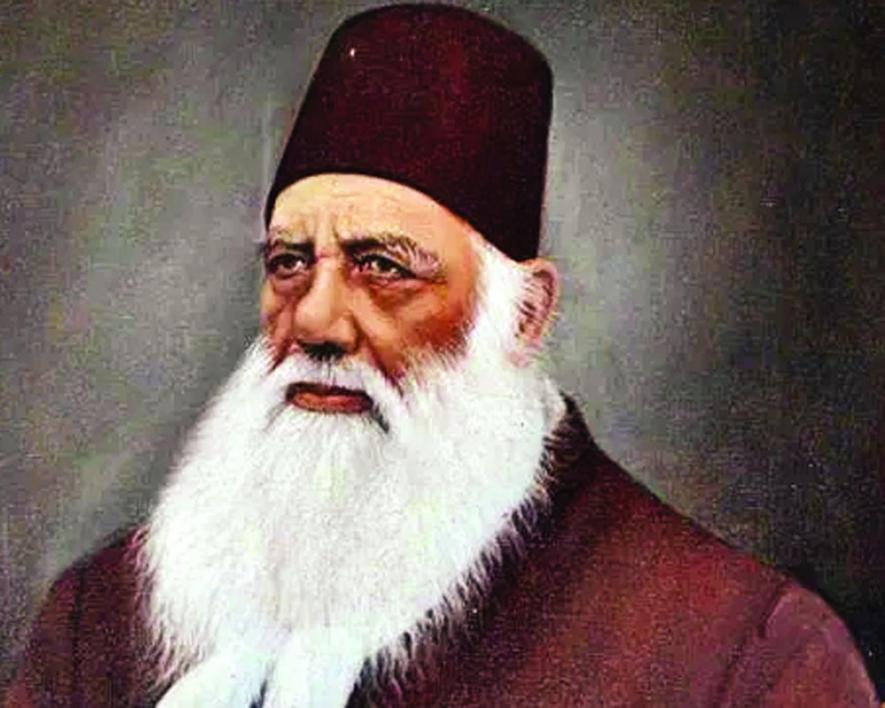
Sir Syed. Image Courtesy: Daily Pioneer
It is a common refrain that the Indian state and pro-establishment celebrities are misleading the nation and trying to divide citizens based on their primordial identities. The ongoing farmer agitation is a case in point. In such a context, it is essential to create new narratives that unite people and inspire them to resist oppression.
Fallacious narratives are not a new phenomenon. Even in the colonial era, leaders, reformists, and public intellectuals were painted along stereotypical lines. Reassessing those figures in today’s context can not only bring new evidence from the past to the fore, it could also be the prescription for prevailing stereotypes about communities and their leaders.
This essay strives to understand the rise of economic nationalism in nineteenth-century India through the prism of Sir Syed Ahmed Khan’s economic proposals, chiefly those related to agriculture. His precepts from the turn of the last century are an apt guide to the attitudes and perceptions of the Indian state and pro-establishment actors today.
Iconic and controversial in equal measure, Sir Syed is of special interest for he is usually remembered for fostering identity politics, a charge that is levelled against the opponents of the state even today. At best, Syed is seen as one who sought to educate an elite section of Indian Muslims, his community.
Syed has been examined by historians around contentions over whether he sowed the seeds of communal-territorial separatism. Of late, some of his unpalatably contemptuous remarks about the subordinated castes were also critiqued. One of the earliest protestations is to be found in a 1959 Urdu monograph written by the progressive poet Moin Ahsan Jazbi, Hali Ka Siyasi Sha’oor.
Two other monographs, Sir Syed aur Hindustani Nizam-e-Zara’at (Sir Syed and India’s Agrarian System) published in 2014, and Sir Syed Ki Liberal, Secular aur Scienci Tarz-e-Fikr, published in 2018 by Prof. Iftakhar Alam Khan, are critiques of recent vintage.
Iftakhar Khan, born in 1938, is of special interest in our context. He taught museology at the Aligarh Muslim University and later served as director of its Sir Syed Academy. These monographs are of great importance for they rescue Syed from a mere “minoritarian” to one who also championed economic nationalism, and at the same time as Dadabhai Naoroji. Yet, Syed’s engagement with nationalist economic policies—which I am tempted to label ‘Agri-Economic Nationalism’—are quite obscure, even to professional historians of modern India.
In the first monograph, Khan highlights the stagnation of India’s per capita income between 1857 and 1947 as evidence that the colonial period was essentially a long phase of recurrent famines. More than 300 million Indians perished between 1870 and 1910.
In 1860, when famine struck the United Provinces, Syed was posted at Moradabad as Sadr-us-Sudur and the Collector was John Strachey. Syed is recorded in the monograph as having supervised famine relief diligently and efficiently. His biographer, Hali, says he strived not to let starving Hindu and Muslim children be taken away by Christian missionaries and resolved to raise funds for a large well-furnished orphanage that offers food, lodging, and education to children.
On 2 June 1883, Syed submitted a memorandum to the government insisting that it establishes agricultural development banks in rural areas. He saw banks as the only way to rescue the rural poor from usurious moneylenders (mahajans and sahukars). On 9 September 1879, in his capacity as a member of the Viceroy’s Council, he proposed a bill to this effect. Twice, in 1879 and 1880, he introduced elaborate bills for compulsory smallpox vaccination, a major cause of death at the time.
Syed demanded amendments in the agriculture laws to reduce the burden of revenue extraction on farmers. He listed the causes of famine and ways to prevent or minimise them and asked the government to sponsor irrigation facilities.
Quite presciently, in his Risala Asbab-e-Baghawat-e-Hind or Tract on the Causes of the Indian Revolt, published in 1859, he said false cases filed against people by the British government were the root cause of their discontent and led to the revolt against the East India Company in 1857.
This sequence of events would resonate with any Indian, at least in the limited sense that an elected government has been refusing to accept the farmers’ demands to withdraw three new farm laws, which has sparked massive protests in the most crucial agrarian belts of the country. It is true the colonial regime brutally crushed the revolt of 1857, yet, Syed’s diagnosis of a grave communication gap between the ruler and the ruled also got the triumphant foreign regime to listen. Within two years, the Indian Councils Act was introduced by the colonial administration.
In 1878, forests were taken under state control by the colonial regime, shrinking pasture lands for livestock and creating shortages of wood and cooking fuel. The peasantry grew more and more dependent on animal dung for cooking fuel, as their access to forest wood shrank. This depleted the supplies of manure that farmers used to enhance soil fertility and farm productivity.
By then, Syed had been running a scientific society (from Ghazipur in the United Provinces), as a movement to link scientific education and research with agricultural practices of the day. As part of the society’s work, English-language books of western sciences were to be rendered into Urdu for the benefit of Indian readers.
Syed detailed such a sequence of events—linking the state wresting control over forests to declining farm productivity—to explain why there were repeated outbreaks of famines and rural distress in India. According to Iftakhar Khan, the tone and tenor of his writings for the scientific society conveyed a strong environmental consciousness as well.
On 2 June 1883, Syed wrote in his weekly publication, Aligarh Institute Gazette or AIG, complaining about the expansion of the railway network and the damage it was causing. He explained how colonial railway expansion was consuming forest wood for railway sleepers on an unprecedented scale.
The vice president of the society was Baldev Bakhsh and Syed and GFI Graham, the assistant superintendent of Ghazipur Police, and later biographer of Syed, were the secretaries. At the inaugural meeting of the society, whose proceedings were published in June 1864, Syed delivers a speech in which he emphasises how land and produce from land are the chief sources of income and prosperity of Indians. He registered his protest against colonial interventions and blames its exploitations for the falling soil fertility.
The proceedings also mention at least four kinds of books that had to be prepared or translated into Urdu, including a list of European agricultural tools and ways to use them; a tract on steam engines, another on European agricultural sciences, and one on agrarian practices in England. He sought to publish a book on the machines, tools, and techniques prevalent in Europe, such as ploughs that dig deep using oxen or horses, light steam engines for ploughing, sowing, grain-separation, pump-irrigation, stem-cutting, manure-making, etc. He thought some tools used by railway engineers could be useful for agriculture as well.
In a subsequent meeting, which took place in Aligarh in September 1864, Syed clarified that a list of indigenous tools and techniques also must be compiled and that all tools and techniques must be demonstrated to Indians. A resolution was passed to ask the government for three acres of land, which the society was given. On 30 November 1864, work began to construct the “Institute Building” with a huge public library, reading room, laboratory, and museum. Completed in a year, it also had a big lecture-demonstration hall.
Syed published small tracts (or risala) on science and agriculture in Urdu, on themes ranging from water and hydraulics, air, electricity, modern farming, etc. In February 1865, he got another land tract close to the Diwani Adalat [Revenue Court] in Aligarh for experimental agriculture and livestock development. The final plan was to set up an agriculture college. Syed’s correspondence with London-based publishing agents Smith and Co. show he had intended to publish photographs with the inner workings of each tool.
In a letter dated 30 September 1865 to SH Princep, the Collector of Aligarh, he asks for a district-wise list of the total annual production of each crop along with the month of sowing and harvest, the techniques used, and cost per acre. He wanted variations in soil fertility recorded along with the diseases that afflict plants, methods to preserve seeds for sowing, etc.
The Scientific Society also wanted a population count, the number of landowners and landless labourers, their caste details, the extent of cultivated and uncultivated lands, agricultural maps of villages and districts with crop varieties and levels of production, and other details recorded. He wanted the government to widely disseminate this information and continually offered assistance to do so.
The institute had two irrigation pumps and had imported seed varieties from England. Barley, wheat, maize, and flowers were cultivated following Scotburn’s book. The results and techniques were demonstrated to other agriculturists. The institute also sold seeds and saplings, and the AIG would publish details of its work and progress. In September 1871, details on how to grow tobacco and arrowroot with seeds imported from the West Indies or the USA were recorded.
An annual agricultural and industrial exhibition was held to demonstrate the improvements in agrarian production. Iftakhar’s monograph also records the attempts of some hostile British officers to create communal dissensions, which led, by 1877, the government to seek the land on which the institute stood back.
Syed’s memorandum from June 1883 demanded state-sponsored irrigation facilities for farming and proposed canal irrigation or wells where canals cannot reach. He demanded the government persuade well-off landowners to provide such facilities too. On 1 May 1880, the AIG published an editorial praising Raja Jagat Singh of Tajpur, Bijnaur, for hosting a conference on agriculture. In it, Syed elaborates on modern means to enhance production through ilm or knowledge, hirfat wa sana’t or craft and industry, and zaraa’at, which means agriculture.
For long he had been persuading the government to get landed elites to care for the landless workers. His essays, “Dehat ki Safaayee” (Conservancy of Villages, published 27 April 1866) and “Hamaray Rausa aur Qaumi Bhalaayee” (Our Aristocracy and Public Welfare, published 12 July 1866) focus on the well-being of the subordinated classes. [In other writings too, Syed said endowments must be made to sponsor the education of the oppressed.] To strengthen his demands, he cited Cunningham’s Famine Report from 1881.
In a 1 May 1874 editorial, Syed distinguishes natural from man-made famines. The latter, he wrote, created and exacerbated gaps between haves and have-nots. He also affixed the major part of the guilt on moneylenders and hoarders. He proposed that the state regulate loans and do away with unscrupulous hoarding of foodgrain.
In an 1876 pamphlet on pre-colonial rural India, he contrasted the colonial ravaging of the rural economy to have been worse than in pre-colonial times. It hardly needs to be said that from this list of reforms sought by Syed, most reasonably aware Indians would be able to glean the demands of the protesting farmers today.
In all his writings, Syed talked more about mulk ki taraqqi—the progress of the nation—and not about a particular qaum or community. To sum up, the ongoing farmer protest is the latest avatar of the economic nationalism, of which Syed was an early votary in the latter half of the 19th century.
It may therefore not be out of place to argue that the resilience with which farmers across religious affliliations are sustaining their agitation further vindicates the power of economic nationalism in India.
The author teaches modern and contemporary Indian history at Aligarh Muslim University. The views are personal.
Get the latest reports & analysis with people's perspective on Protests, movements & deep analytical videos, discussions of the current affairs in your Telegram app. Subscribe to NewsClick's Telegram channel & get Real-Time updates on stories, as they get published on our website.









